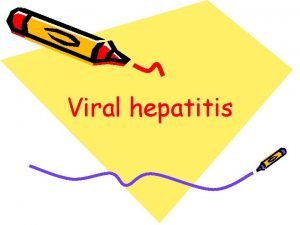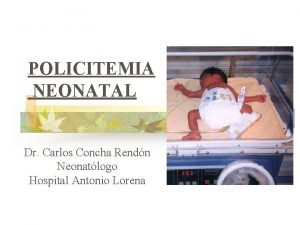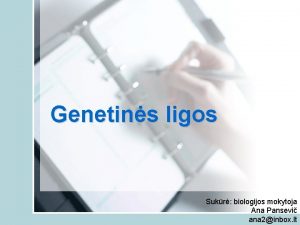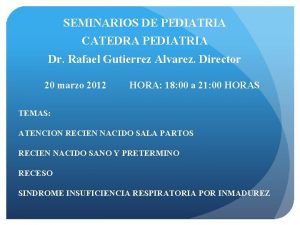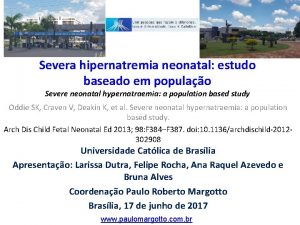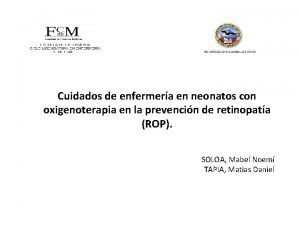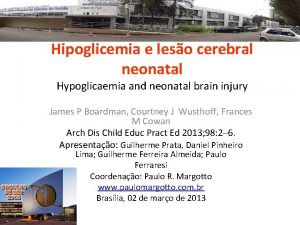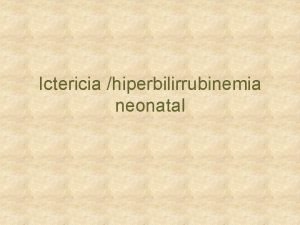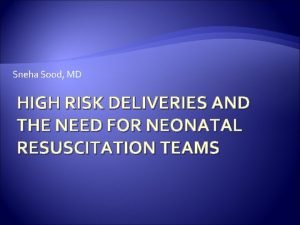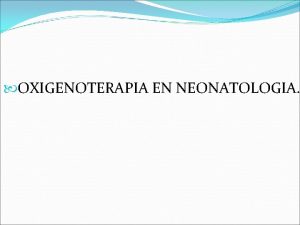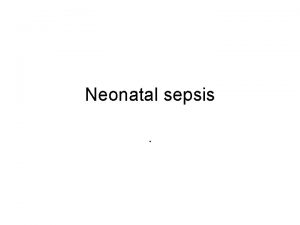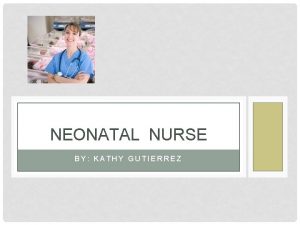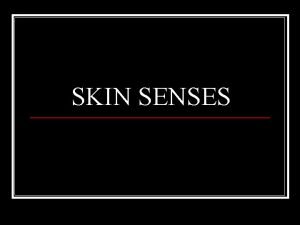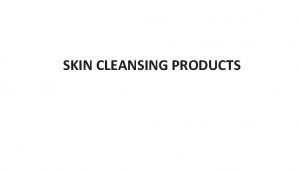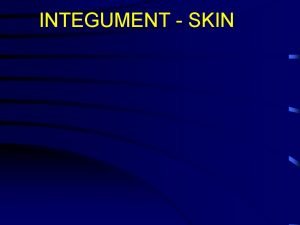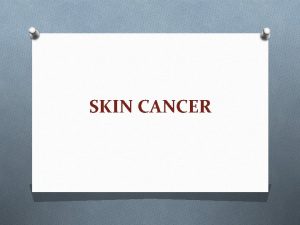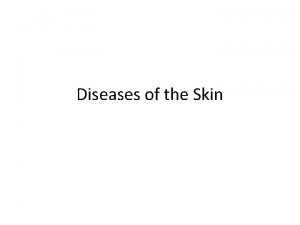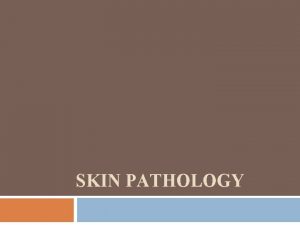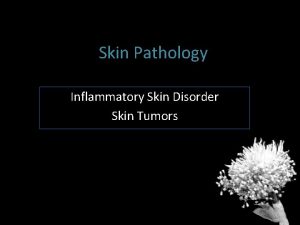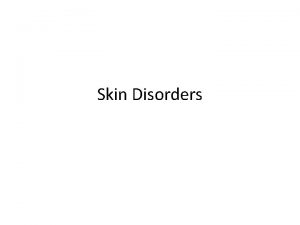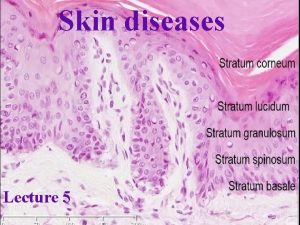Chronological evaluation of functional changes in neonatal skin




















- Slides: 20

Chronological evaluation of functional changes in neonatal skin Anushma Sharma Peter Worsley Howard Clark Eugene Healy Dan Bader 26 September 2017 MDVSN Chronological evaluation of functional changes in neonatal skin

Introduction Hospital admissions experiencing an adverse event, defined as injuries caused by medical management are 2. 9 and 3. 7 percent Deaths due to preventable adverse events exceed the deaths attributable to motor vehicle accidents, breast cancer or AIDS To err is human-building a safer heath system. Committee on Quality of Health Care in America, Institute of Medicine 2000 2

1 in 8 babies born in UK will spend at least a few days in a neonatal unit for prematurity , low birth weight or have a medical condition in need for specialized treatment. Healthcare quality improvement partnership, NDAU 2016 3

1 in 8 babies born in UK will spend at least a few days in a neonatal unit for prematurity , low birth weight or have a medical condition for specialized treatment. 40% of babies admitted to neonatal unit are preterm NDAU 2015, p 4 4

1 in 8 babies born in Uk will spend at least a few days in a neonatal unit for prematurity , low birth weight or have a medical condition for specialised treatment. 40% of babies admitted to neonatal unit are preterm Skin damage is one of the most common iatrogenic injuries occurring in as many as 24% of NICU patients Ness et at, Int J of Dermat 2013 5

1 in 8 babies born in Uk will spend at least a few days in a neonatal unit for prematurity , low birth weight or have a medical condition for specialised treatment. 40% of babies admitted to neonatal unit are preterm Skin damage is one of the most common iatrogenic injuries occurring in as many as 24% of NICU patients Equipment and devices are implicated in more than 50% of pressure ulcers in neonates Ness et at, Int J of Dermat 2013; Ligi et al, Lancet 2008 6

1 8 Structure and Function of Skin Characteristic Epidermal Thickness Cell attachments Dermis Adult Term Pre-term 50µm 27. 4µm Normal Fewer Normal ↓Collagen and elastic fibers ↓↓Collagen and elastic fibers Total anhidrosis ↓Response to thermal stress Vernix caseosa NA ↓Activity for 7– 10 days Fully developed Acid mantle Normal delayed Eccrine glands Normal Undeveloped or absent Relevance to Skin Health ↑Transepidermal water loss ↑Tendency to blister ↓Elasticity ↑Blistering ↓hydration, ↓bacterial protection ↓antimicrobial processing 18

1 9 Skin Development and the Environment • Neonatal skin undergoes substantial adaptations from water based alkaline environment to a dry gaseous environment. • Preterm skin characteristics will inevitably influence their ability to control body temperature and water balance. • Humidified incubators are used to decrease evaporative losses and thermal instability. – Increased barrier formation when subjected to a lower RH. – An enclosed environment with a high RH can pose a risk for nosocomial infection. • There is no established consensus on the optimal level of humidification for preterm infants. 19

Chronological evaluation of functional changes in neonatal skin

AIMS q q q Evaluate the interaction between the environment and skin development in preterm infants Develop a series of robust parameters which assess the integrity of the skin in neonates Establish the relationship between gestation age and the development of skin function 21

Inclusion criteria All preterm babies All term babies Exclusion criteria Infants with dermatological conditions (e. g. collodion skin, harlequin baby) Infants receiving therapeutic hypothermia 22

Data collection GA↓/Time→ Investigations↓ Preterm p. H TEWL USS skin Biofluid Swab Term p. H TEWL Birth/ Consent √ <48 hours 3 -4 days 6 -7 days 9 -11 days 13 -15 days 28 -34 days √ √ √ √ √ √ √ √ 50 -56 days or before discharge √ √ USS skin √ √ 23

Measurements • TEWL • p. H • Thickness of the skin ucing high frequency US 24

Till date………………. • 11 term • 20 preterm 24+5 to 36+6 weeks 690 -2725 g 25

Three subjects… GA Weight (g) Weight centile No. of readings Antenatal steroids Mode of delivery 1 33 980 0. 4 th centile 7 F √ LSCS 2 24+5 730 50 th centile 7 F √ LSCS 3 24+5 800 25 -50 th centile 6 M √ LSCS 26

Subject 1 Time 26 h Day 4 Day 7 Day 11 Day 15 Day 30 Day 48 TEWL 12. 6 18. 6 14. 321. 6 8. 3 -9. 2 4. 1 -9. 6 7. 913. 2 11. 422. 6 14. 416. 7 p. H 6. 6 6. 2 5. 66 6 5. 8 5. 6 5. 5 Dermis 1. 13 1. 15 1. 27 2. 8 1. 87 1. 53 1. 43 Hypo dermis 4 3. 66 4. 05 4. 42 3. 58 3. 71 4. 09 27

Subject 2 and 3 F M Day 4 F M Day 7 F M Day 10 F Time 42 41 h h TEWL 27 26 20 22 15 15 10 17 19 p. H 6. 4 5. 8 6. 3 6. 6 6. 1 6. 3 5. 9 6. 3 Dermis 0. 9 1. 0 1. 1 1. 2 1. 3 1. 4 Hypo dermis 3. 4 2. 2 3. 5 2. 2 3. 4 3. 1 3. 5 M Day 16 F M Day 31 Day 45 14 23 15 21 6. 0 5. 9 5. 8 6. 0 6. 3 1. 4 1. 5 3 1. 58 3. 2 4. 1 3. 3 4. 9 5 3. 32 4. 82 28

3 3 33

Watch this space……. . 34

YOUR QUESTIONS
 Thin skin vs thick skin
Thin skin vs thick skin Alipidic skin is skin that
Alipidic skin is skin that Stratum lucidum
Stratum lucidum Chemical change examples
Chemical change examples Changes in latitudes, changes in attitudes meaning
Changes in latitudes, changes in attitudes meaning Functional and non functional
Functional and non functional Cantilever type space maintainer
Cantilever type space maintainer Non functional plasma enzyme example
Non functional plasma enzyme example Plasma enzymes
Plasma enzymes Functional pavement evaluation
Functional pavement evaluation Workwell functional capacity evaluation
Workwell functional capacity evaluation Hepatomogaly
Hepatomogaly Salinoferesis
Salinoferesis Neonatal progeria
Neonatal progeria Esfuerzo respiratorio neonatal
Esfuerzo respiratorio neonatal Hiponatremia neonatal
Hiponatremia neonatal Cuidados de enfermería en oxigenoterapia neonatal
Cuidados de enfermería en oxigenoterapia neonatal Neurológica
Neurológica Ictericia fisiologica y patologica
Ictericia fisiologica y patologica Dr sneha sood
Dr sneha sood Halo en neonatologia
Halo en neonatologia











